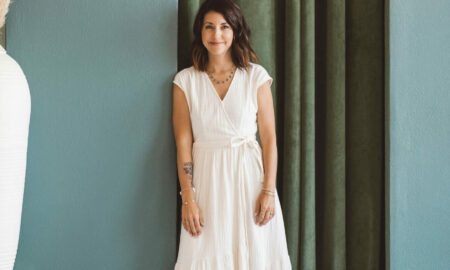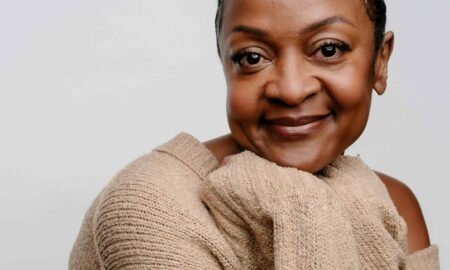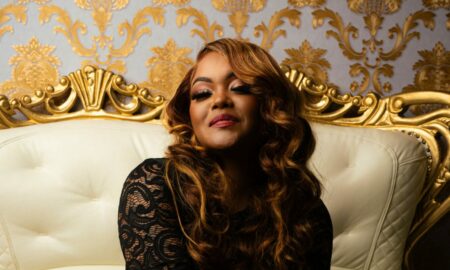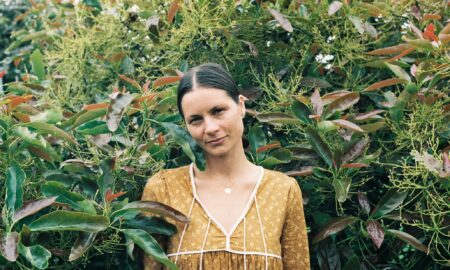

Today we’d like to introduce you to Laura H Parker.
Thanks for sharing your story with us Laura H. So, let’s start at the beginning and we can move on from there.
My childhood fascination with the “occult” (sorcery, witchcraft, and extra-sensory-perception), in addition to my highly acquisitive visual imagination rather naturally set me up to “bond” with the medium of photography. This opportunity came along in the form of summers spent at “ISOMATA” (The Idyllwild School of Music and the Arts), where as an eleven-year-old, I begged my way into the high school photography course. Over the course of three summers, I mastered a fully manual camera, and eagerly absorbed the almost mythic dimensions of the analog experience, with its light, film, paper, and chemistry. The darkroom was located in the basement just below the stage where the orchestra practiced and tuned its instruments, and to this day, I can only assume that this intermingling of darkness and muffled musical notes added a sort of synesthesia to my perception of photographic possibility. What remained constant throughout high school, college, graduate school and beyond, was a sense of intimate familiarity with the tools of a medium whose very parameters fostered an almost infinite degree of play and experimentation.
Great, so let’s dig a little deeper into the story – has it been an easy path overall and if not, what were the challenges you’ve had to overcome?
For anyone old enough to have “cut their teeth” in photography, in the heyday of analog photo processes sort of exploding into their own, pushing at the very definition of what, actually, constituted a “photograph,” both physically as well as conceptually – the wholesale conversion to digital has led to some very intense reckoning. Personally, I despaired the arrival of that which eliminated the essence of what I thought had attracted me to photography in the first place: the alchemy of the darkroom and the poetry of the “latent image.” Whether shooting color film or black and white negatives, there was always a ‘ritual’ to look forward to, from the development of film to the highly focused maneuverings in either pitch darkness (color processes) or under the glow of a safe light (black and white).
To exchange a lifetime of darkroom ‘choreographics’ for the cold glare of the computer screen and crude pixelations of a cumbersome new generation of digital cameras was, quite simply, wrenching. Add to that the breadth and depth of the new “digital darkroom” offerings, in programs such as Photoshop, whose complexity offered an infinite degree of flexibility, and my sense of having lost my hold on a familiar language, a language whose very nuance was proportionate to its parameters, was almost complete. I had become exquisitely attuned to working, especially, in the confines of a color darkroom, where accident and chance often contributed to, if not defined, my sense of direction. The very notion of “digital darkroom” seemed self-canceling. This new ‘impostor’ was as hostile to darkness as it was synonymous with control. Gone were the days of light-leaks and chemical stains. Or so, I thought.
Fast forward another decade-plus, after a slew of classes, frustrations, and some truly inspired personal tutors, and I have come to accept there are basically two photo-medias and my practice has expanded to encompass them both. Analog has by no means died, (I maintain a home darkroom where I continue to experiment with photograms and abstraction; and there is a veritable renaissance of people, young and old, committed to film and wet-lab techniques). Digital has also facilitated my entry into some uncharted territory (animation) as well as “fast tracked” the rate at which I can gather and respond to my raw-material. I remain a light and lens-based artist with the same acquisitive yearnings that steered me in the direction of photography in the first place.
Laura H Parker Photography – what should we know? What do you guys do best? What sets you apart from the competition?
As a visual artist – photography, animation, installation – I am as interested in the phenomenon of perception as I am committed to the poetics of the everyday. For over three decades, I have animated photographs into both narrative and non-narrative sequences. I see my photography as a kind of “optical thought process” where pictures propose relationships that carry the force of poetry. Long before digital access to images unleashed a veritable tsunami of juxtaposed imagery, I have been structuring and combining my own fragmentary images into unified, multi-paneled ‘wholes.’ Interweaving both color and black and white, combined images become springboards for associative leaps where certain habits of thinking are challenged. I am curious about what is framed and what is left out, and how the mind fills in the gaps. I am also interested in how we perceive, and how that is both physically (“eye level”) and culturally (“sunset”) ingrained. What constitutes a “subject” and why? Perhaps, that is why I gravitate toward fragments, the overlooked, and the mundane. Be it the distressed bottoms of old pots and pans, a decomposed Noguchi lamp, planets and stars as ‘point sources of light’ to ‘write’ with or most recently, a “forest of signs” carved into the trees in the river-canyon right behind my house – the layered possibility contained in simple instances of observation is the gift and burden of photography. Ultimately, my aim is to reinvigorate visual thinking using photography as both a receptacle for ideas and a catalyst for change. Oh, I might add to create objects of great beauty!
What moment in your career do you look back most fondly on?
Every succeeding exhibition, publication or most importantly, resolution of a new body-of-work, is a “proudest moment” event. Just this summer, I had an opportunity to show a new body of work, my wall-installation of “Arborglyphs,” in a wonderful gallery in rural Vermont. A ‘small’ gallery with very sophisticated, mostly east-coast programming, “BigTown Projects” offered a special opportunity: a two-person exhibition with my sister, Carolie Parker, an artist as well as a poet. Carolie and I have been working in parallel for decades, trading studio visits, sharing critique groups, and even showing in the same galleries, but never have we been “spotlighted” in a two-person “Sister Show.” That was gratifying and Big Thanks are due to many!
Contact Info:
- Website: www.lauraparker.com
- Instagram: @laurahowardparker
- Facebook: Laura H Parker








Image Credit:
Main photo: Paul Netherton, Manager, Full Circle Thrift shop
Getting in touch: VoyageLA is built on recommendations from the community; it’s how we uncover hidden gems, so if you know someone who deserves recognition please let us know here.





















Siobhan McClure
November 24, 2018 at 23:50
Love the interview and images.
Kate Savage
December 2, 2018 at 17:47
Laura Parker never fails to deliver, both in pictures and words! What a fantastic interview!